There’s something special about making pasta by hand. It truly is a labor of love.
What better way to spend a rainy, chilly Saturday than sipping wine and making homemade pasta? At least that’s how I planned to happily spend my day. I won’t lie, it’s a process. It takes time to make the pasta dough, make the filling, and then to individually pipe and fold each one by hand. But I promise you that all your hard work will be worth the effort when the finished dish graces your dinner table.
This particular shape is called scarpinocc. It originated from the Lombardy region of northern Italy. Its name stems from the word scarpa, which means shoe, as this rather odd looking-shaped pasta resembles an old-fashioned wooden shoe. While I would have loved to have learned how to make homemade pasta from my mother or grandmother, this was not the case. Alas, I learned from a former chef, who worked at Flour+Water (San Francisco, CA), in a week-long pasta class a few years back (it was one of the most enjoyable weeks of my life).
The scarpinocc are filled with Taleggio, a washed rind cow’s milk cheese that’s big on personality (read: creamy, smooth, salty, strong, complex, nutty, funky/beefy), mixed with a bit of cream. The cream ups the decadence quotient and makes the Taleggio more smooth and pipeable. Of note, Taleggio is named after an alpine valley (Val Taleggio) in Lombardy, Italy.
Scarpinocc’s defining little indentation in the middle is perfect for catching sauce. As for the sauce, keep it simple. You don’t want to mask their flavor. Just a swirl of butter in a pan and then finished with a drizzle of quality balsamic vinegar are all they need. Less is definitely more in this case.
As for the taste…rich, tender little bites that melt in your mouth. There are not enough words in the English language to describe the deliciousness!
Let’s make scarpinocc. You game?
Here are a few shots of the process…First off, making the pasta dough (you’ll need 00 flour and eggs).
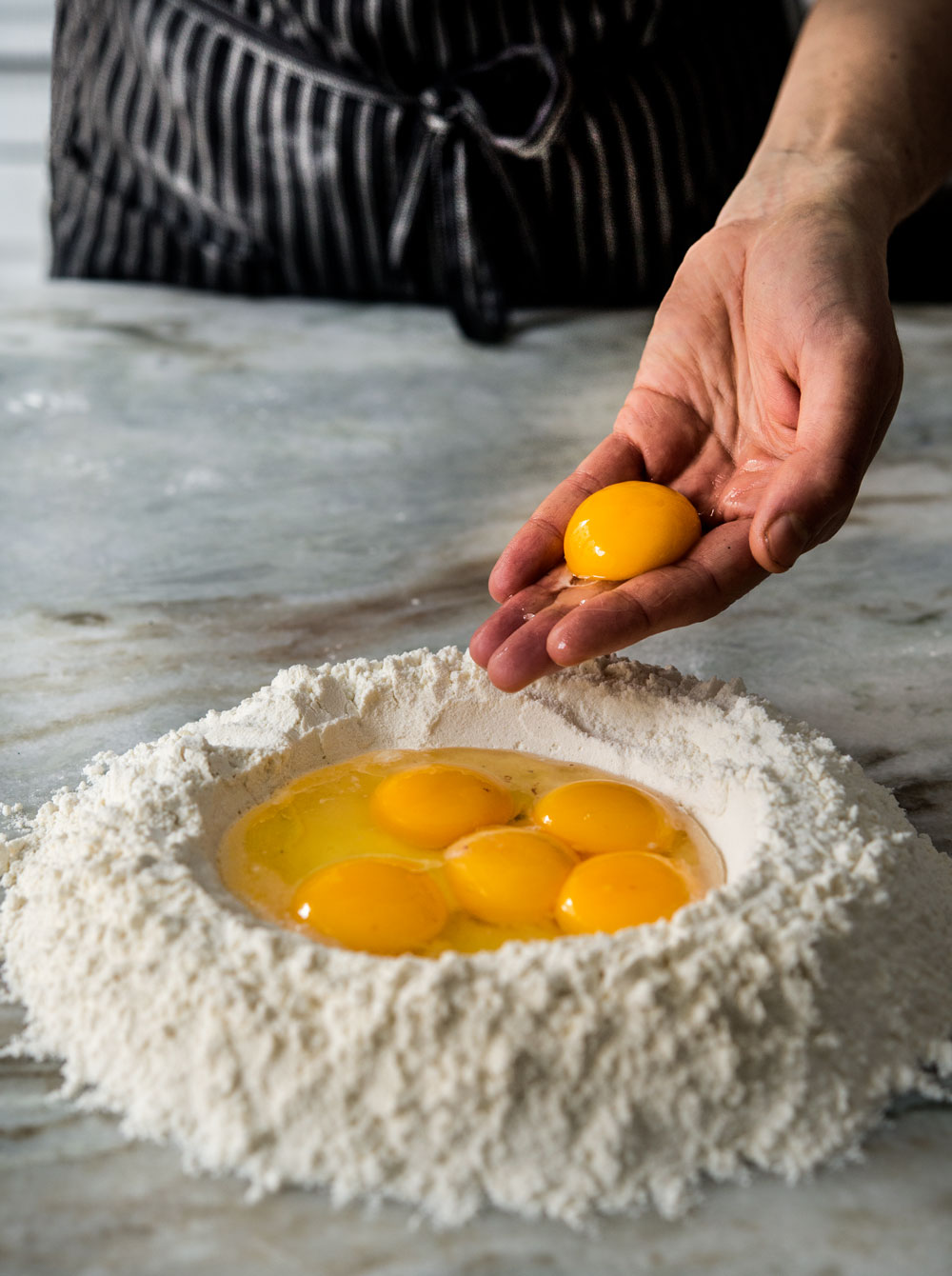
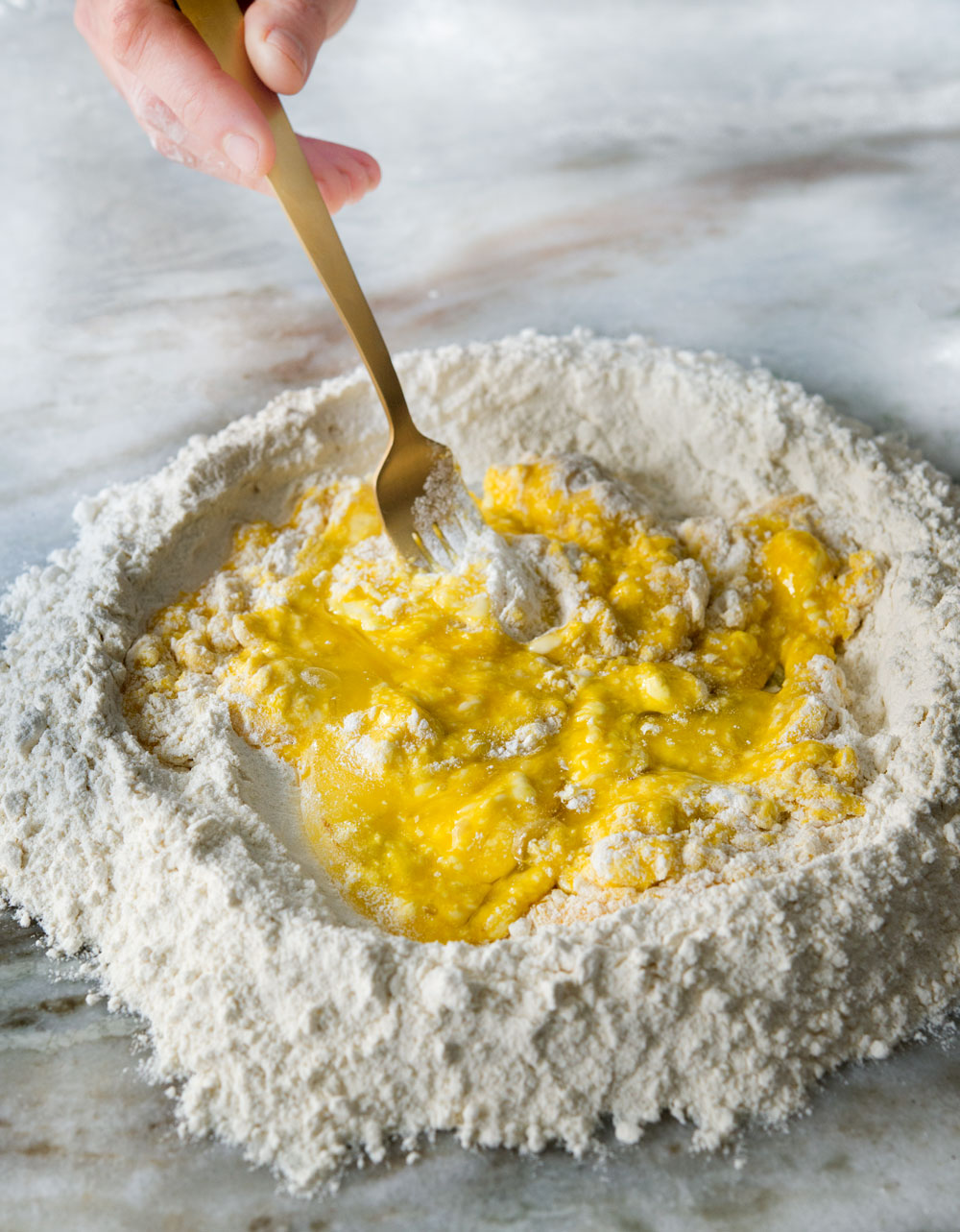
The dough may seem dry, but that’s okay. As it rests (for 30 minutes), the dough will slowly absorb the liquid and hydrate (if the dough is too wet, it will be gummy and stick to the pasta roller)…
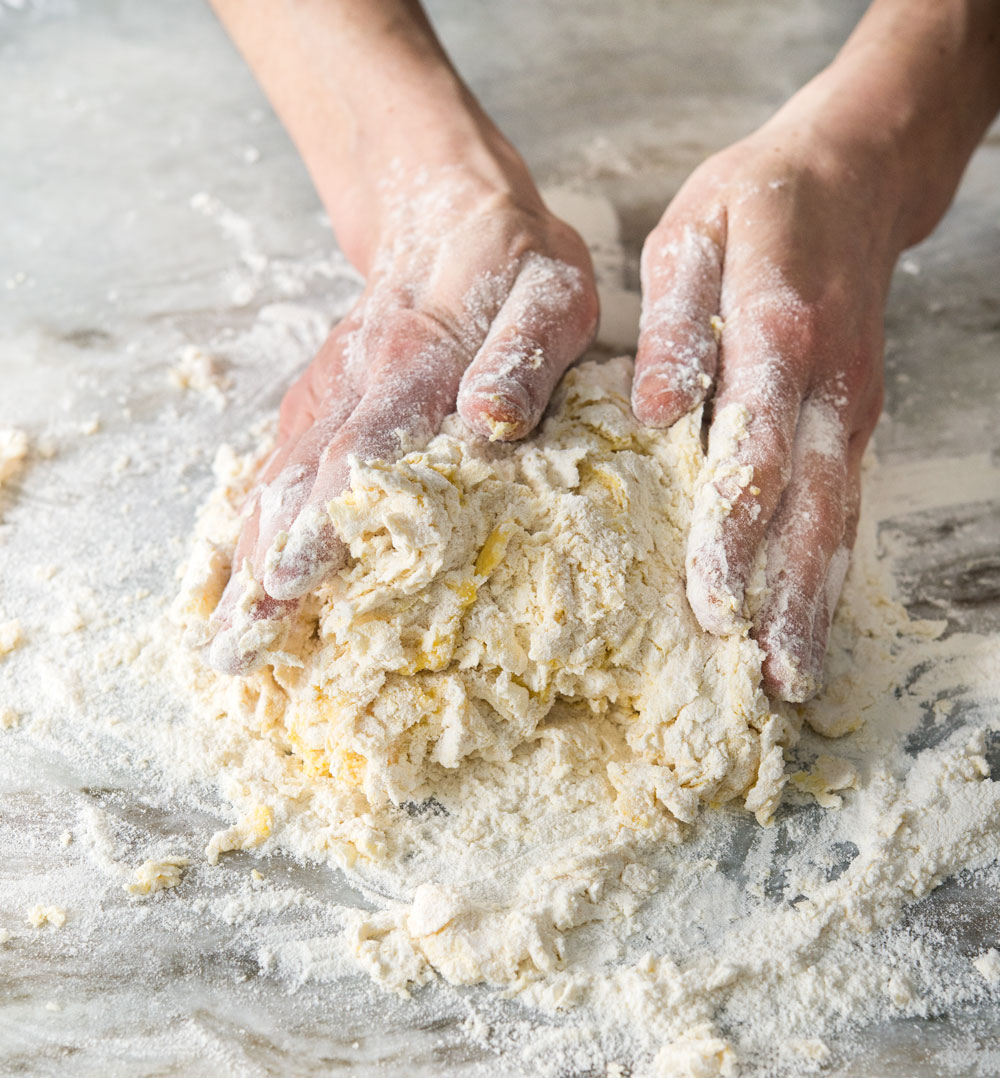
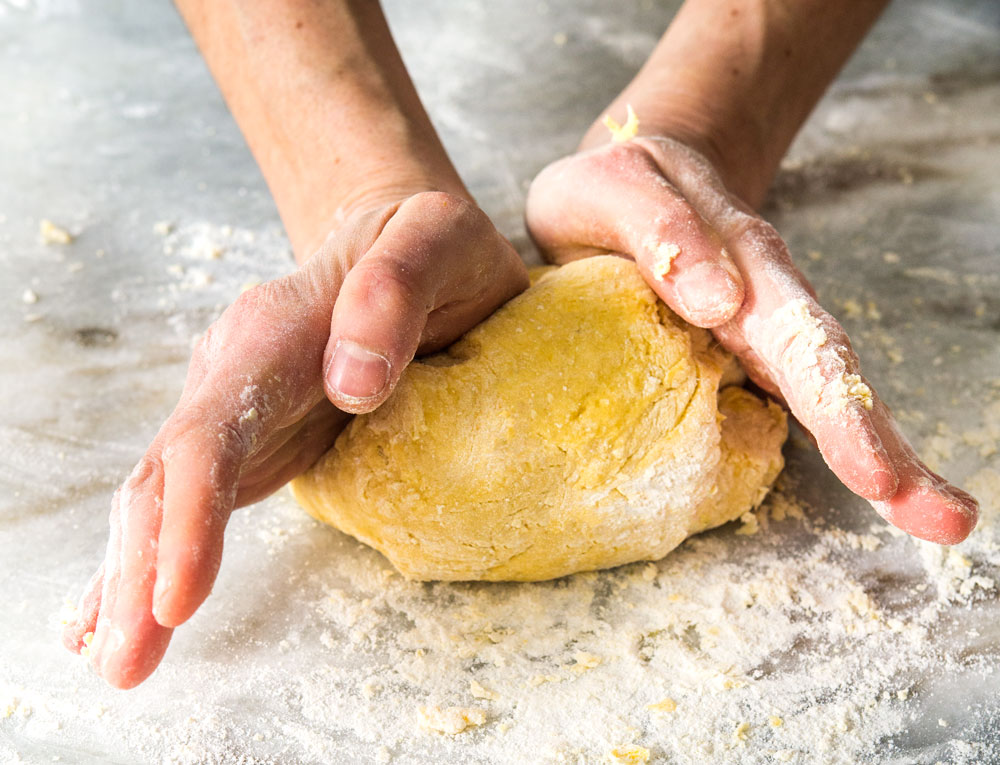
Rolling out the dough: cut off a piece of dough and run it two to three times through each successive pasta roller setting, until about 1/16th-inch thick (third to the last letting on my KitchenAid pasta attachment) …
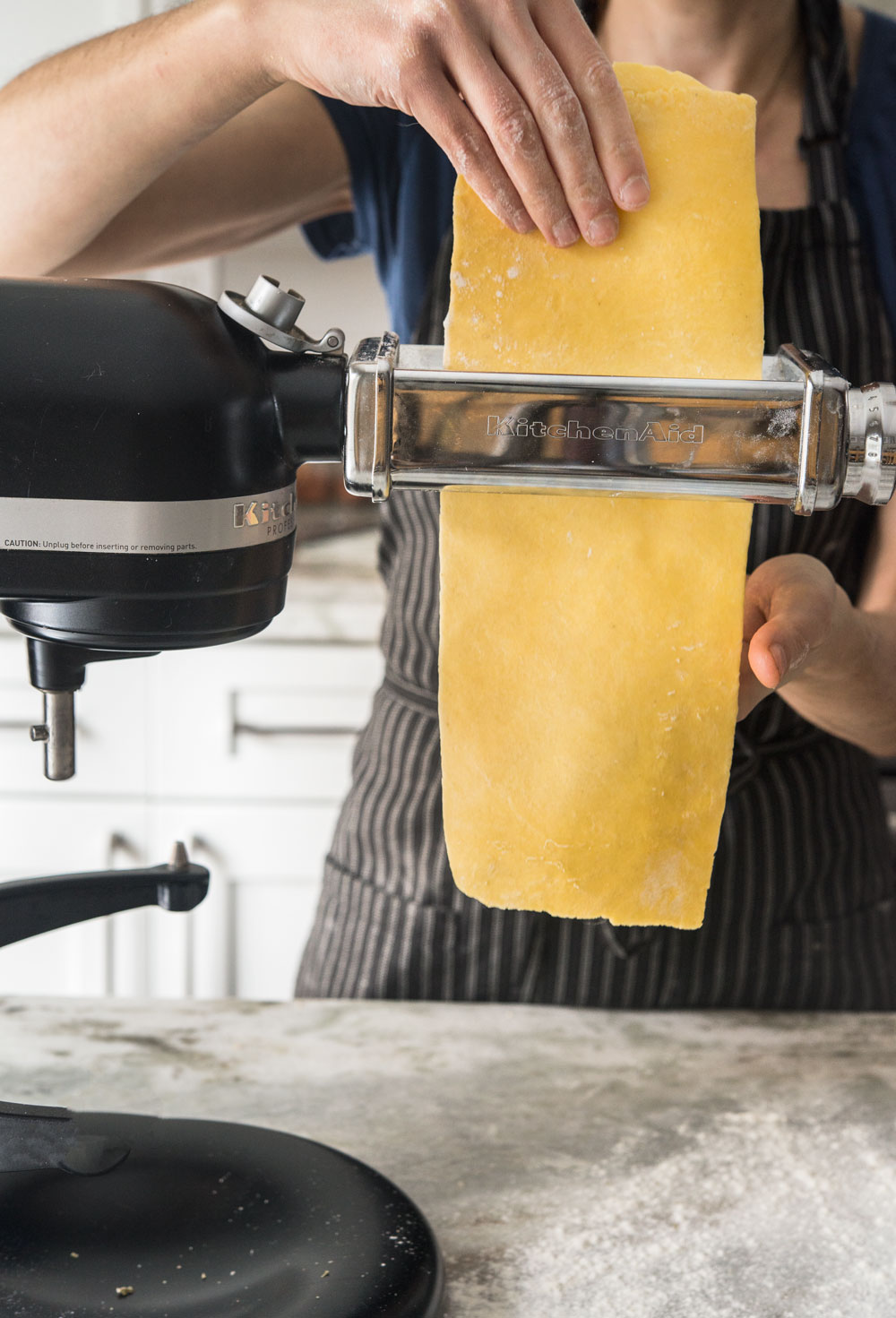
Cut into 2-inch by 2 1/2-inch squares (a six-wheel pastry cutter would have come in handy here, but I don’t have one, so I cut them by hand) and pipe each piece with the Taleggio filling….
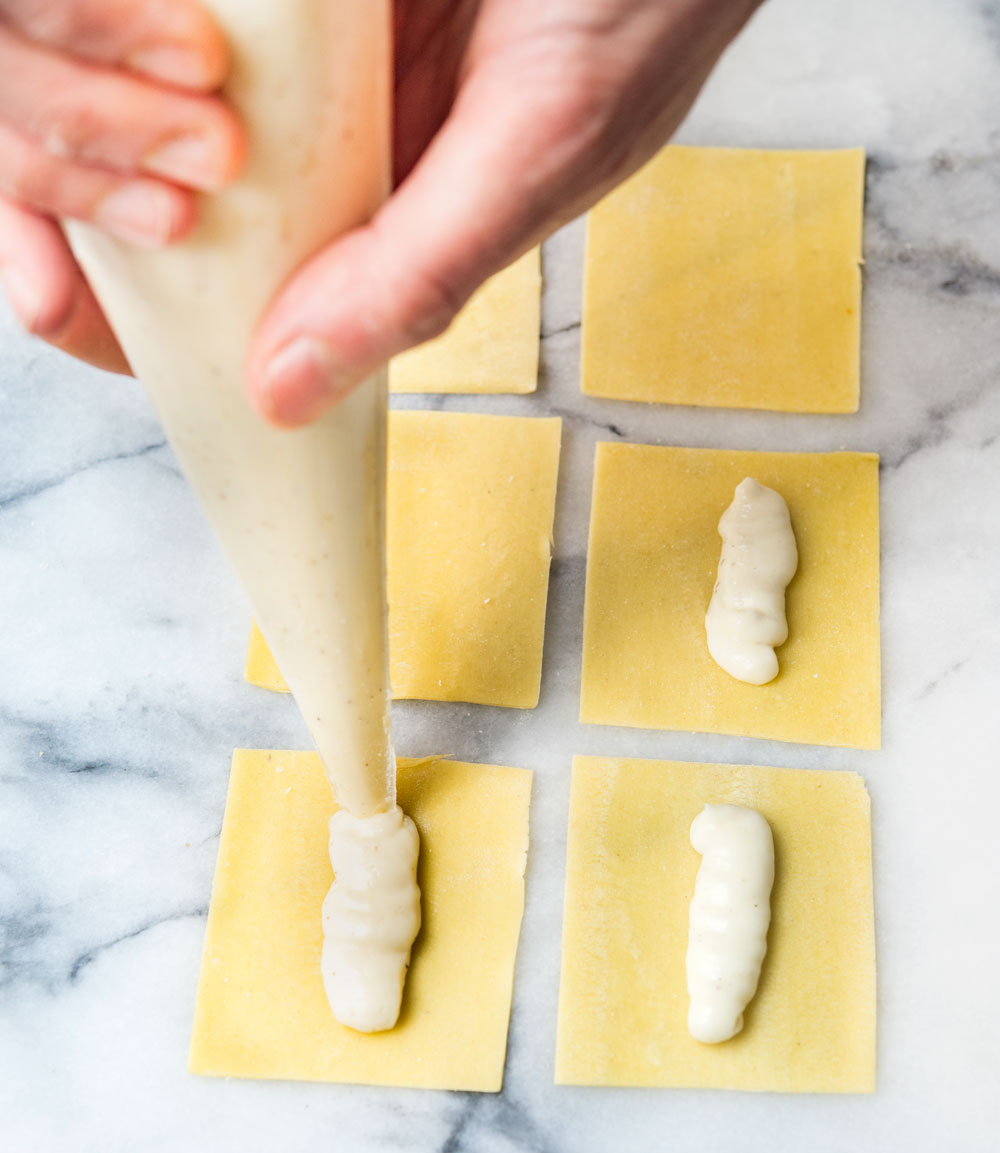
Forming the scarpinocc…
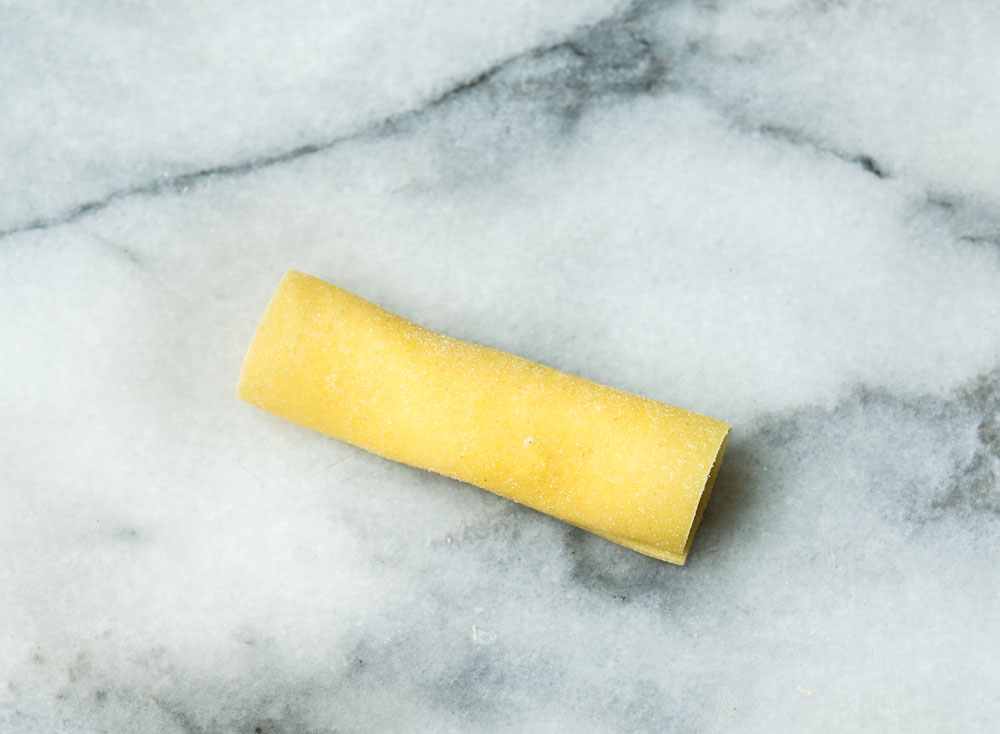
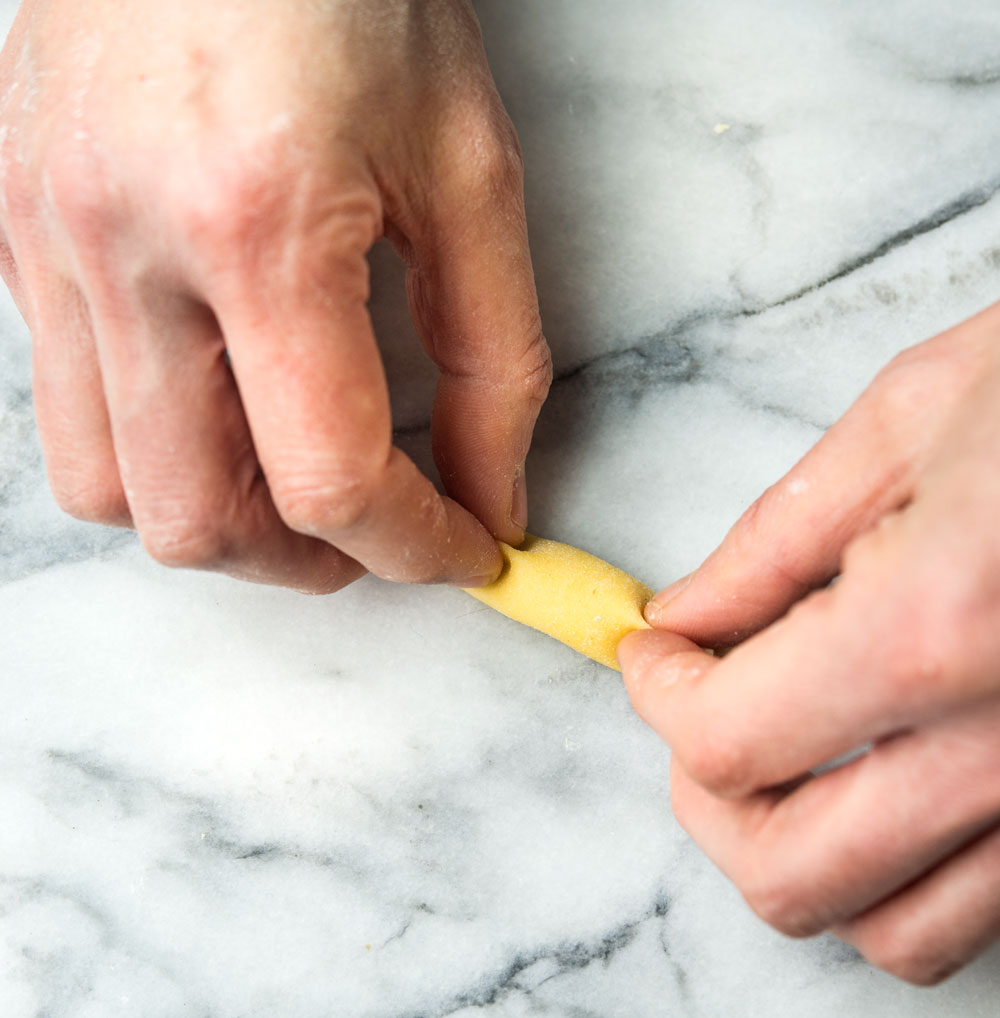
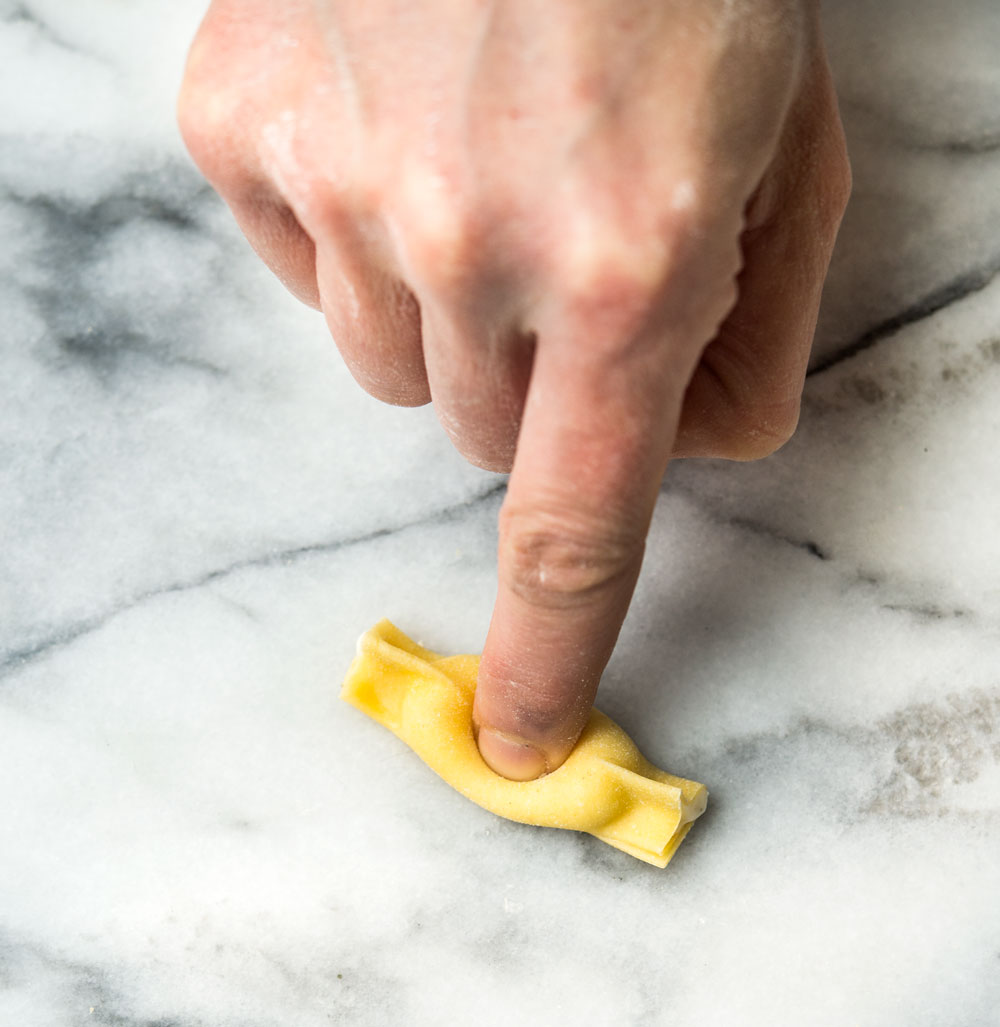
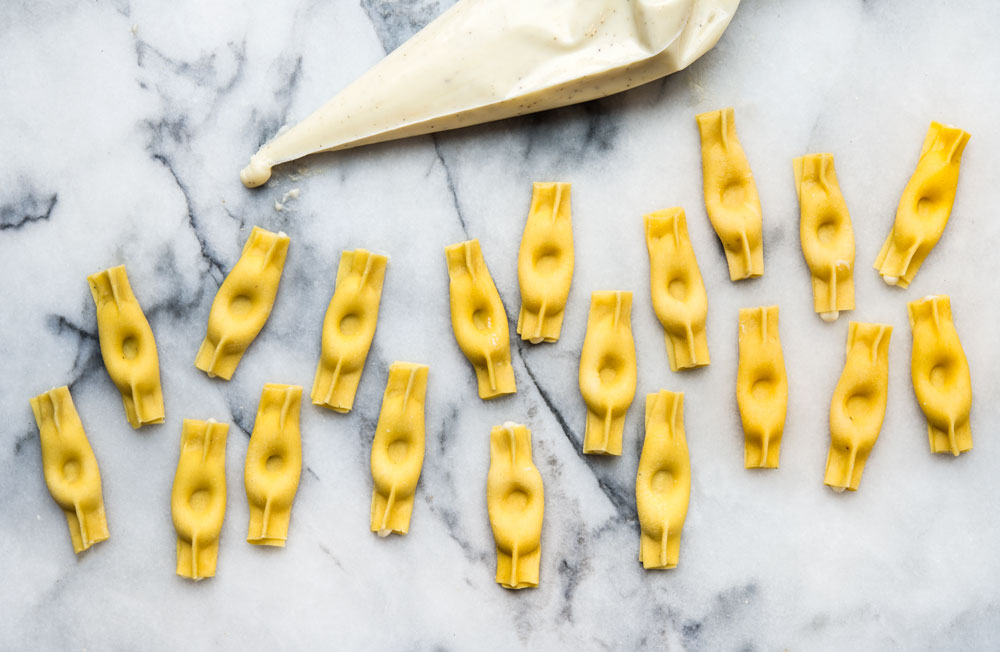
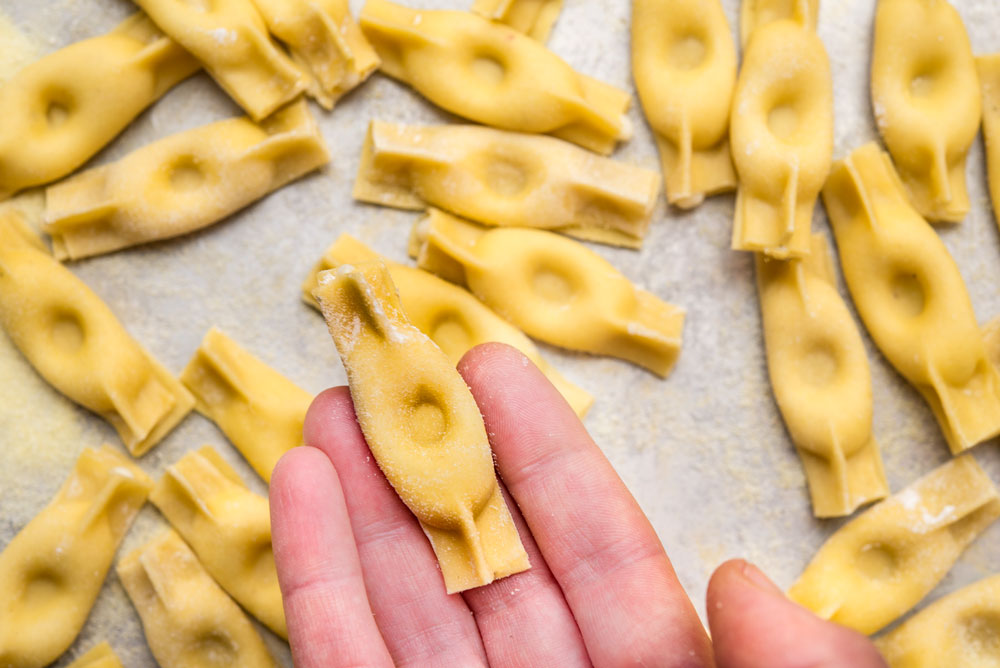
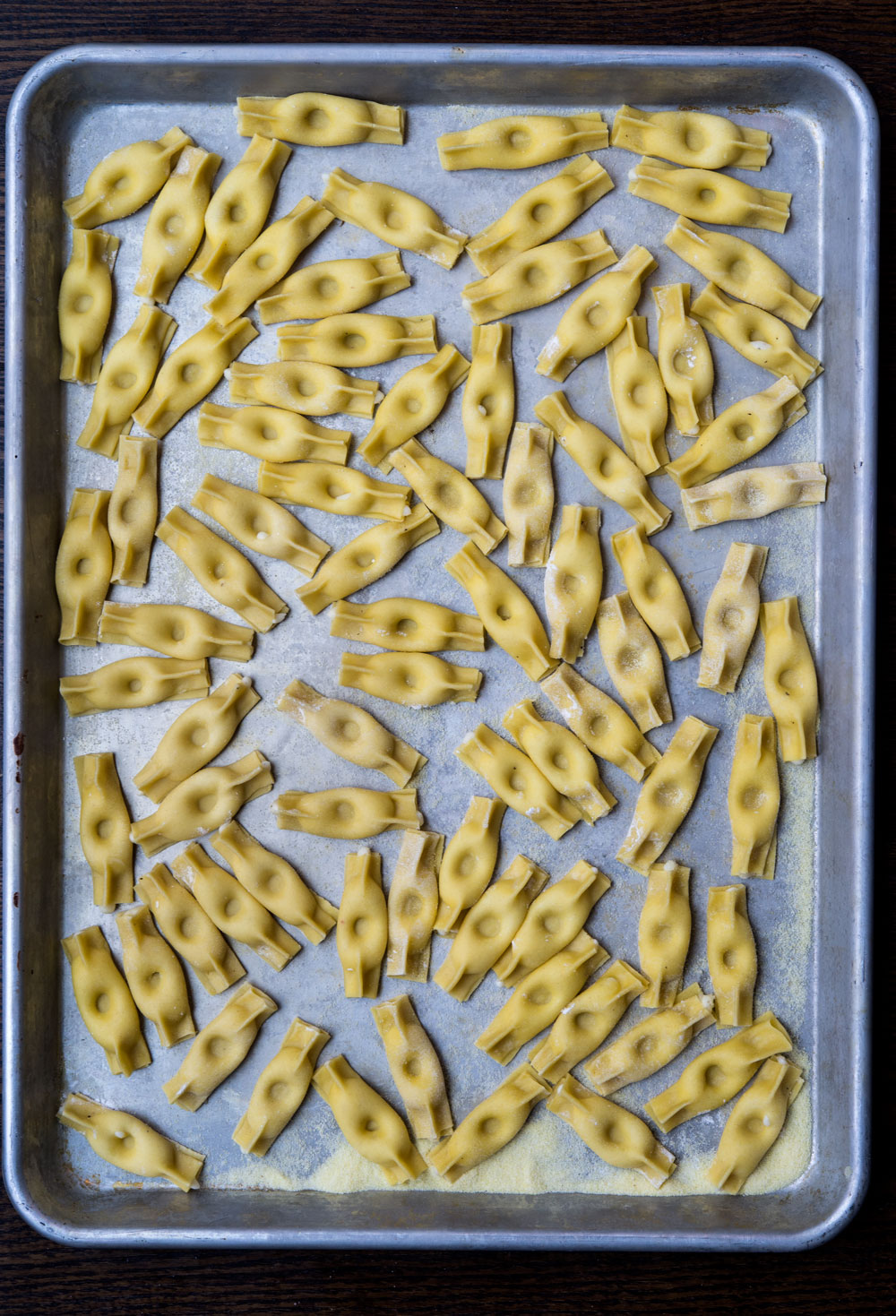
The rich, salty cheese with the sweet balsamic, bathed in butter. Divine.
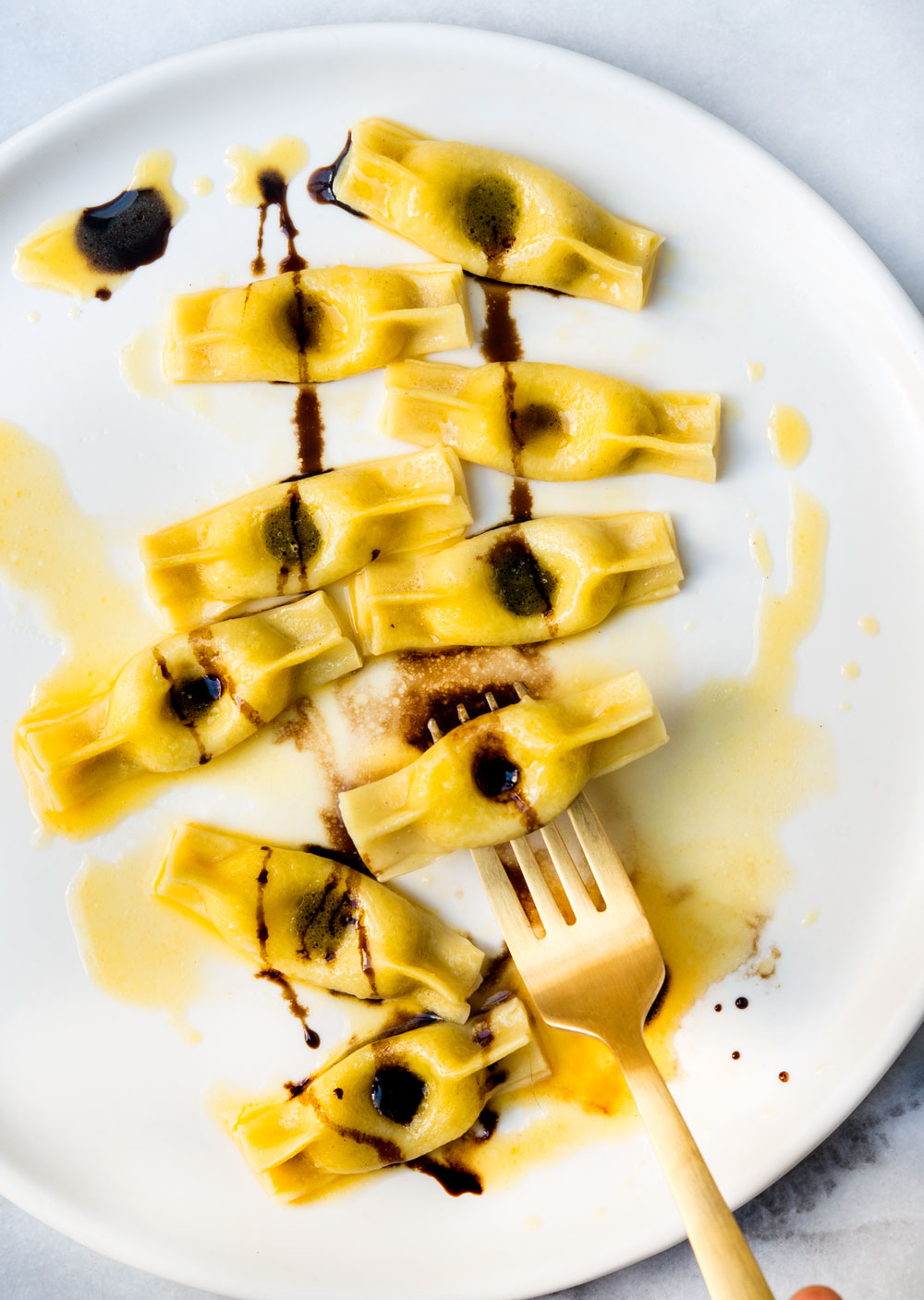
Scarpinocc with Taleggio
Adapted from Flour + Water
made about 7 dozen scarpinocc (plus the few I “tested” along the way in the name of quality control)
Pasta dough (instructions below)
Taleggio filling (instructions below)
unsalted butter
good quality balsamic vinegar
Lightly flour your work surface. Cut off a piece of dough, keeping the rest covered in plastic so it doesn’t dry out. Run the dough through your pasta machine starting with the largest setting. Run it two to three times through each successive pasta roller setting until about 1/16th-inch thick (third to the last setting, #6, on my KitchenAid pasta attachment).
Line a baking sheet with semolina flour (to prevent the scarpinocc from sticking).
Cut the dough into 2-inch by 2 1/2-inch pieces (a six-wheel pastry cutter comes in handy here, though is not essential). At this point you need to work fast to prevent the dough from drying out. Keep a spray bottle close by to lightly mist the dough if necessary.
Pipe a stripe of filling in the middle of each rectangle of pasta (along the longer 2 1/2-inch direction), leaving a 1/4-inch base of dough around the edges. Fold the pasta over in thirds length-wise so that the seam is on the bottom (with your finger, you can add a little water to form a seal if necessary). With your thumb and index finger, pinch the ends of the pasta, forming a ridge at the top of the ends of each piece. With your index finger, press the center of the pasta to form a dimple. You’ve formed your first scarpinocc. It gets easier with practice. Repeat with the remaining pasta and filling.
Bring a pot of water to a boil. Salt the water. When it comes back to a boil, drop in the pasta (working in batches). Cook until 80% cooked through, just a minute or two.
Meanwhile, heat a skillet over medium heat. Melt a couple tablespoons of butter (more if you like). Add a tablespoon or two of pasta water and swirl. With a slotted spoon transfer the pasta to the skillet and gently toss the pasta in the butter. Cook another minute or two until al dente. With a slotted spoon, transfer to serving plates. Spoon a little hot butter on top. Drizzle with balsamic vinegar. Serve immediately.
Leftover scarpinocc can be frozen. Let them dry out a bit and then store in plastic bags or air-tight containers.
Pasta dough
2 well-packed cups (360 grams) 00 flour
1 teaspoon salt
100 grams (2 large) whole eggs
90 grams (about 5) egg yolks
1 1/2 teaspoons extra virgin olive oil
Mix the flour and salt. Place the flour on a dry, clean work surface forming a mound. Create a well in the middle.
Slowly add the eggs, egg yolks, and olive oil. With a fork, gently beat the eggs; be careful not to disturb the walls of the flour. Slowly begin to incorporate the flour walls into the egg mixture. Continue mixing the flour with the eggs until you have a solid mass.
At this point, with your hands, start folding and forming the dough, incorporating the rest of the flour until you have a stiff, solid mass (removing any dry clumps of flour).
Knead the dough. Drive the heel of your hand into the dough, rotate the dough 45 degrees, and repeat until the dough is firm and bouncy and has a smooth, silken texture. Tightly wrap the dough in plastic and let rest 30 minutes.
Taleggio Filling
10 1/2 ounces Taleggio (once I removed the rind I was left with 7 1/2 ounces)
1/3 cup heavy cream
large pinch of finely ground black pepper
Place the Taleggio, cream, and black pepper in a bowl of a food processor. Process until very smooth. Spoon the filling into a pastry bag.
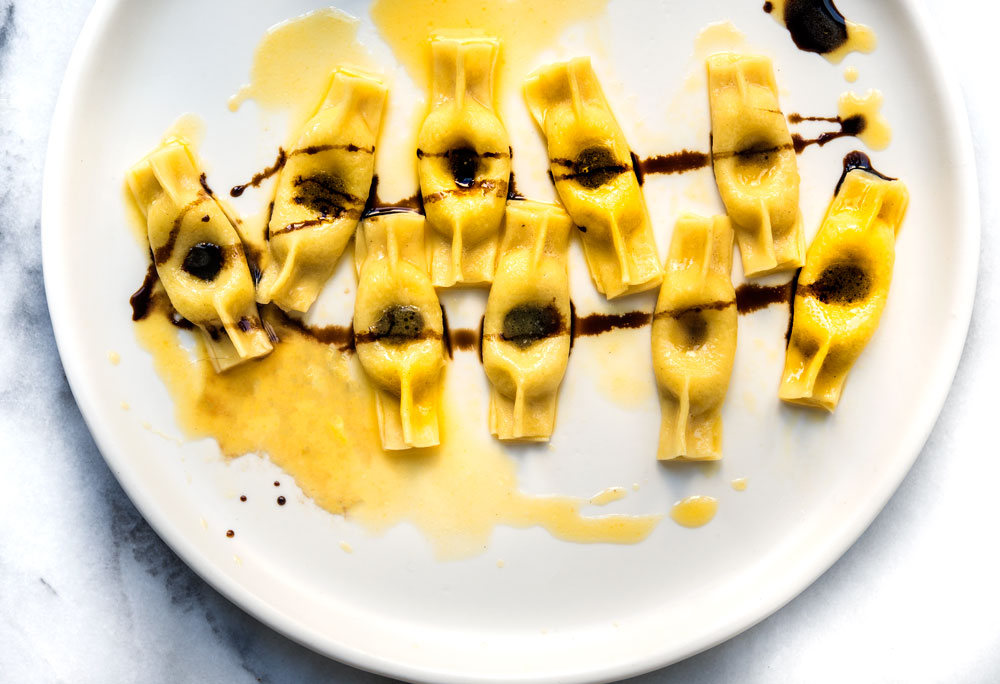


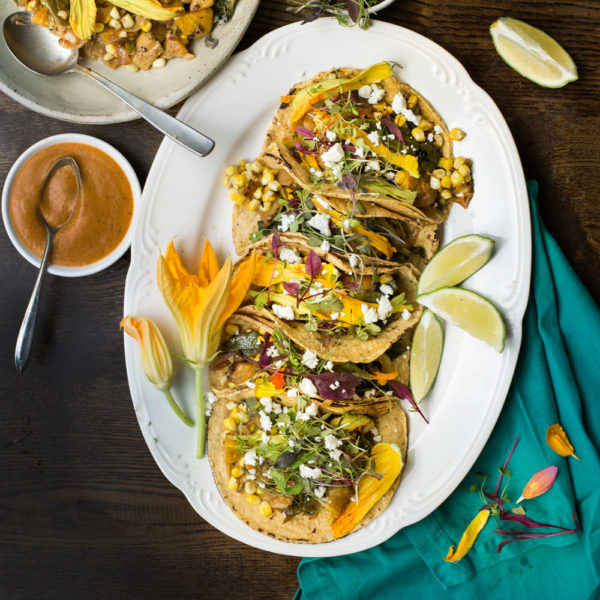
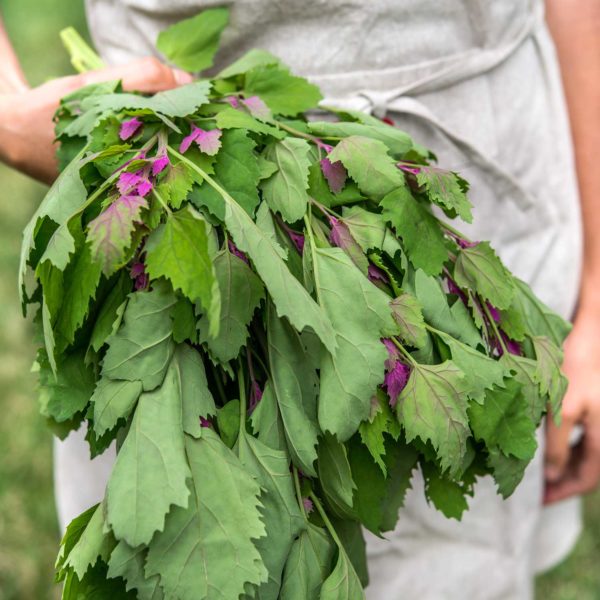
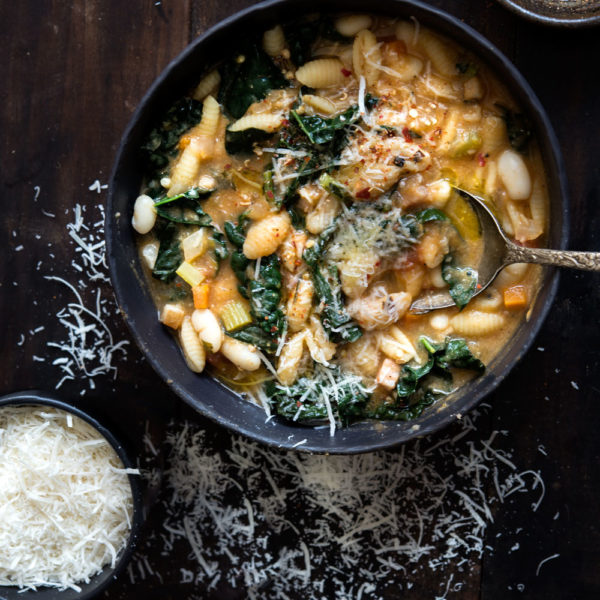


2 comments